Because diamonds are so valuable, it’s essential to have a universal grading system for comparing their quality. In the 1940s and ’50s, GIA developed the 4Cs and the GIA International Diamond Grading System™ to objectively compare and evaluate diamonds.
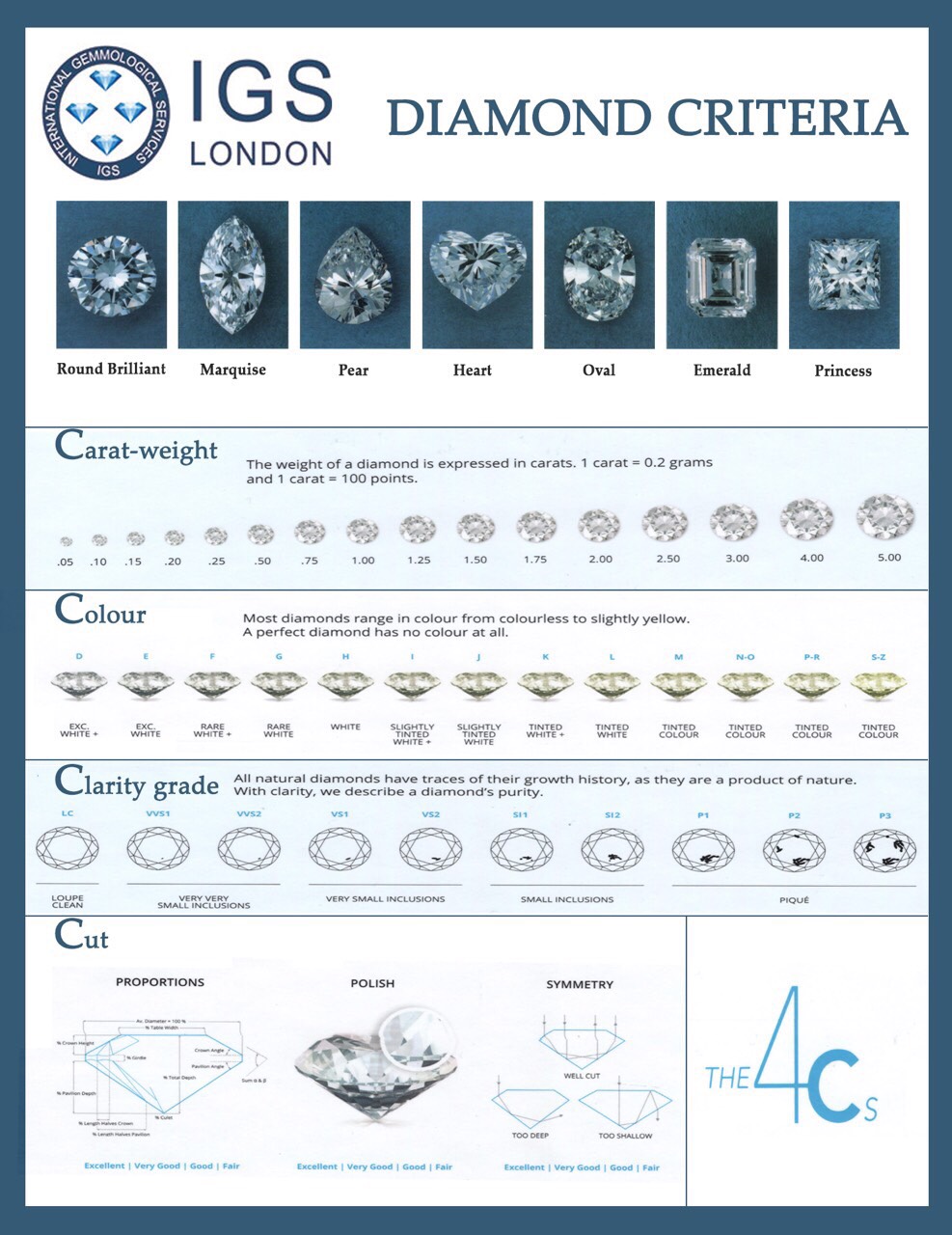
The only diamond characteristic that is within human control is its cut. It is of extremely importance. The ideal proportions of the stone reflect light back to the eye and give it the famous "diamond" glow.
The most frequent type of cutting is Round Brilliant Cut and a diamond cut that way is called "brilliant". A diamond loses approximately half of its initial weight during cutting. There are some other standard shapes: Princess, Emerald, Marquise, Oval, Heart,Pear, Baguette, etc.
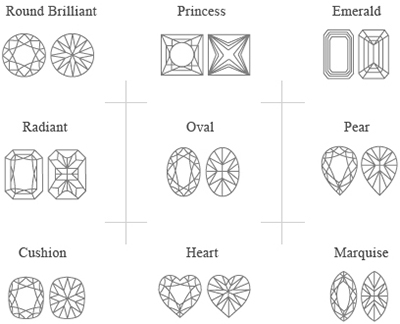
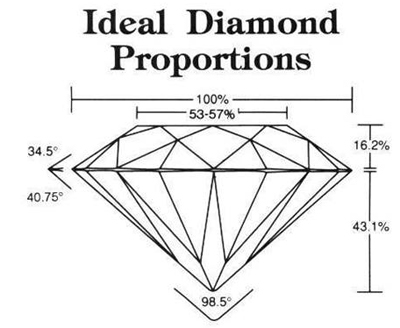
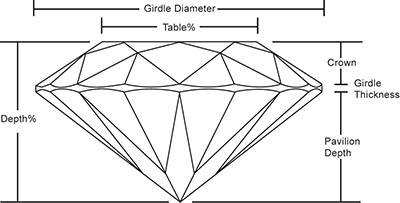
It is the absence of colour that makes a diamond most valuable.
Diamond is the only gemstone that can be found in all spectrum colours. Although it is thought that diamonds are colorless, they have an admixture of yellow, grey and brown. The most precious ones are the rearrests. These are colorless or so called "Fancy Colour" diamonds: pink, blue, yellow and red.
Also, there are black diamonds. GIA has classified diamonds by colour grading scale that starts with the letter D (colorless) and ends at Z (yellow).
Colour determination is very complex process and it has to be performed under certain specific conditions, making impossible to determine the color of the stone already imbedded in jewelry due to metal reflection.
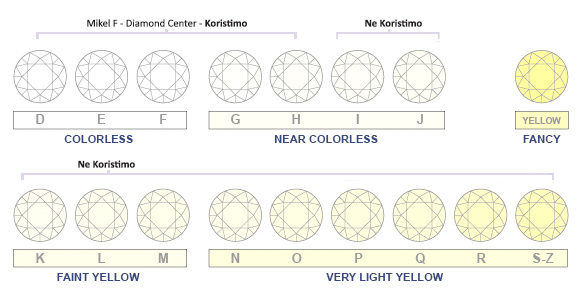
Carat is the weight of a diamond. One carat equals 0.20g.
The carat price of a diamond progressively increases with the size of the stone. Larger diamonds are more rare. In other words, one carat diamond is more valuable than 100 tiny diamonds of 0.01ct.
 |
 |
 |
 |
 |
 |
 |
 |
 |
 |
 |
 |
 |
 |
|
|---|---|---|---|---|---|---|---|---|---|---|---|---|---|---|
| CT | 0.01 | 0.05 | 0.10 | 0.15 | 0.20 | 0.25 | 0.33 | 0.50 | 0.75 | 1.00 | 1.25 | 1.50 | 2.00 | 2.50 |
| MM | 1.50 | 2.25 | 3.00 | 3.40 | 3.70 | 4.00 | 4.50 | 5.00 | 5.90 | 6.50 | 7.00 | 7.50 | 8.00 | 8.50 |
There are often some inner characteristics which are called inclusions (dark "carbon", white "ice", cracks etc.) - that have arisen during particular phases of diamond formation.
